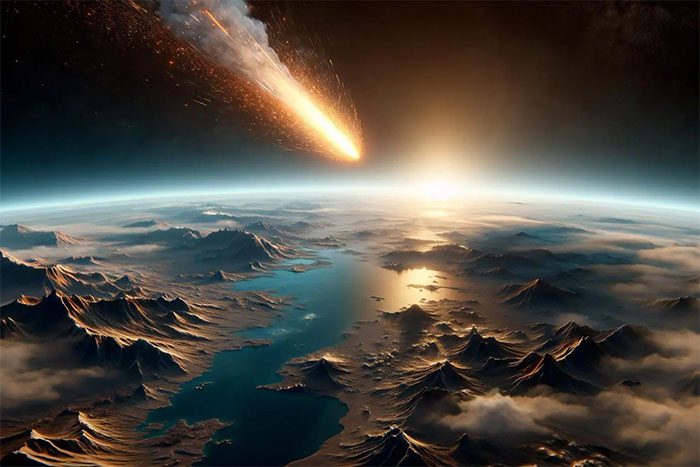Life on Earth may be the result of various materials brought by “alien invaders.”
The precious samples brought back by the Japanese spacecraft from the asteroid Ryugu reveal new evidence about our extraterrestrial origins, as well as those of all life forms on Earth.
This discovery was published in the journal Nature Astronomy by an international research team led by the University of Hawaii (USA) and Kyoto University (Japan).

Extraterrestrial objects may have brought essential elements for life to primordial Earth – (Image: SCITECH DAILY).
According to SciTech Daily, nitrogen compounds, such as ammonium salts, are abundant in materials generated in regions far from the Sun. However, the evidence for their transportation to our planet is still not fully understood.
Ryugu is an asteroid near Earth. Therefore, what happens to it may also provide this missing evidence.
Using an electron microscope, the research team found that the surface of Ryugu samples is covered with tiny minerals, including iron and nitrogen in the form of iron nitride (Fe4N).
Associate Professor Toru Matsumoto from Kyoto University, the lead author of the study, stated that they propose that tiny micrometeorites containing ammonia compounds collided with Ryugu and caused chemical reactions with the primitive surface rich in magnetite iron oxide, resulting in the formation of Fe4N.
Thus, it is the micrometeorites that serve as the source of nitrogen for the area where our primitive, barren planet resides.
Meanwhile, nitrogen compounds are a known building block of life since nitrogen is a fundamental element commonly found in organic compounds.
For true life to exist, we need several other elements, such as carbon and phosphorus—elements that have previously been shown to be delivered by various types of space rocks.
Thus, it can be said that the origins of today’s life forms are indeed pieces of abundant extraterrestrial material.
When seeded into a world with suitable conditions—such as a stable environment, abundant water, moderate temperatures, and a protective atmosphere—the first reactions that create life begin to emerge.


















































